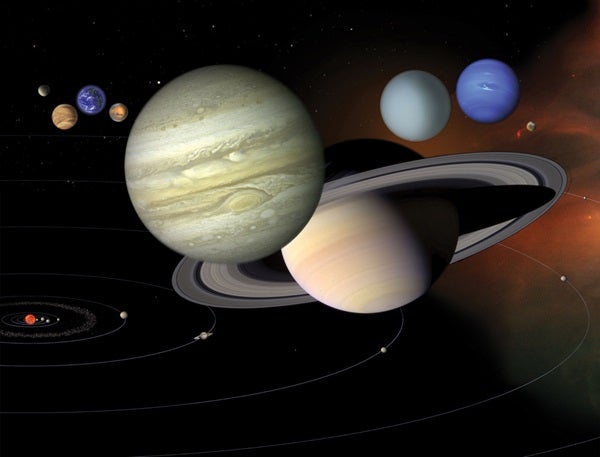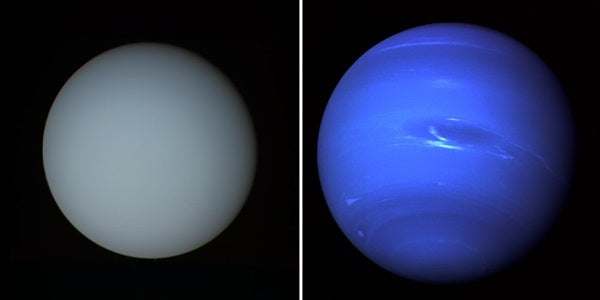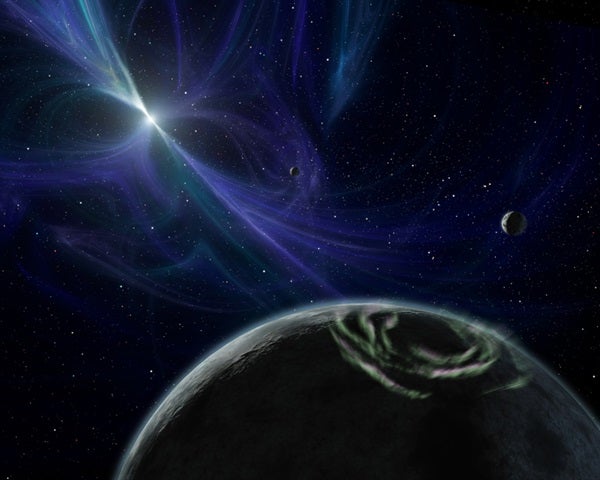Almost everyone can rattle off at least some of the planets in our solar system. But the formal definition of the word was only recently set, and even professional astronomers sometimes disagree. So, what do we mean by planet?
The word planet comes from the Greek term asteres planetai, which means “wandering star.” Greek skygazers were intimately familiar with the night sky — no light pollution back then! — so they noticed that while most of the stars remained motionless relative to each other, some objects seemed to wander among them. Now known as the classical planets, the Greeks named these objects after their gods: swift Mercury, beautiful Venus, warlike Mars, powerful Jupiter, and bountiful Saturn.
Eventually, as science and observing technology progressed, more planets joined this cast. In 1781, British astronomer William Herschel spotted Uranus through his telescope, although at first he thought it was a comet. Some six decades later, in 1846, French mathematician Urbain Joseph Le Verrier predicted an eighth planet and sent the details to Johann Gottfried Galle at the Berlin Observatory, who discovered Neptune that night. Finally, in 1930 an American named Clyde Tombaugh discovered the ninth planet, Pluto.
But wait, Pluto’s no longer a major planet! In 2006, the International Astronomical Union, or IAU, officially voted on the definition of a planet. The new requirements for planetary status — an orbit around the Sun, an overall spherical shape, and an orbital area clear of debris — exclude Pluto. Overnight, it was “demoted” to dwarf planet status. The decision had scientific merits, but proved hugely controversial, both among astronomers and the public.
This definition of “planet” also proves problematic because of recent advances in exoplanetology, the study of planets outside our solar system. Ever since 1992, when researchers discovered planets around a pulsar, the list of known exoplanets has grown to more than 700 at NASA’s last count. (Probably more by the time you see this video.) But because they don’t orbit our Sun, none of them meets the IAU’s definition of planet.
Regardless, astronomers can study some of these worlds in great detail, learning their global temperatures, their weather patterns, and their eventual fate. Current tools are so advanced that scientists have found planets wandering alone in open space, as well as planets still in the process of forming around their host stars. A few of the discoveries might turn out to be similar to Earth, but so far we’re still looking for a true Earth-like planet. With all this planetary data, it’s likely the IAU will have to revisit its definition at some point, but till then there will remain only eight official planets in the universe.
Expand your knowledge at Astronomy.com
Check out the complete Astronomy 101 series
Learn about our stellar neighborhood with the Tour the Solar System series
Read about the latest astronomy news












